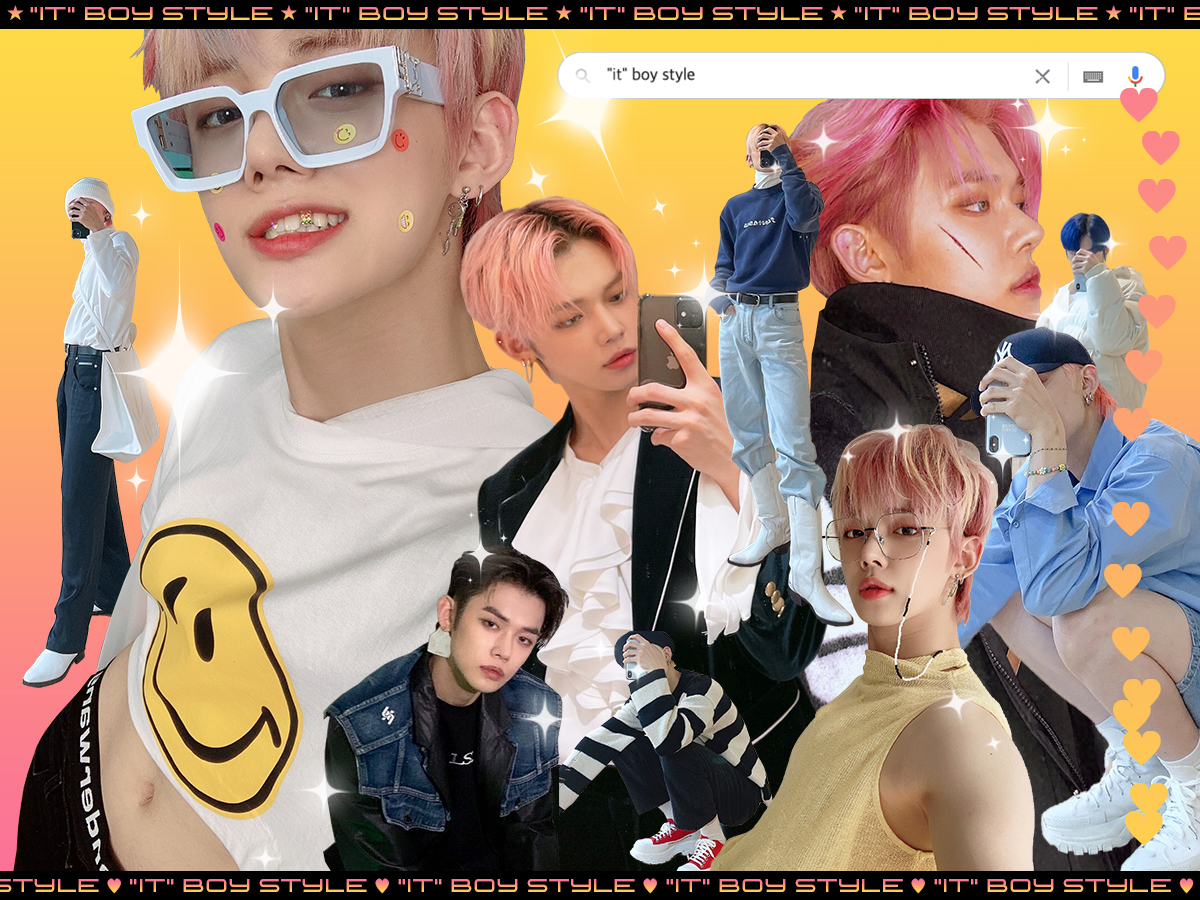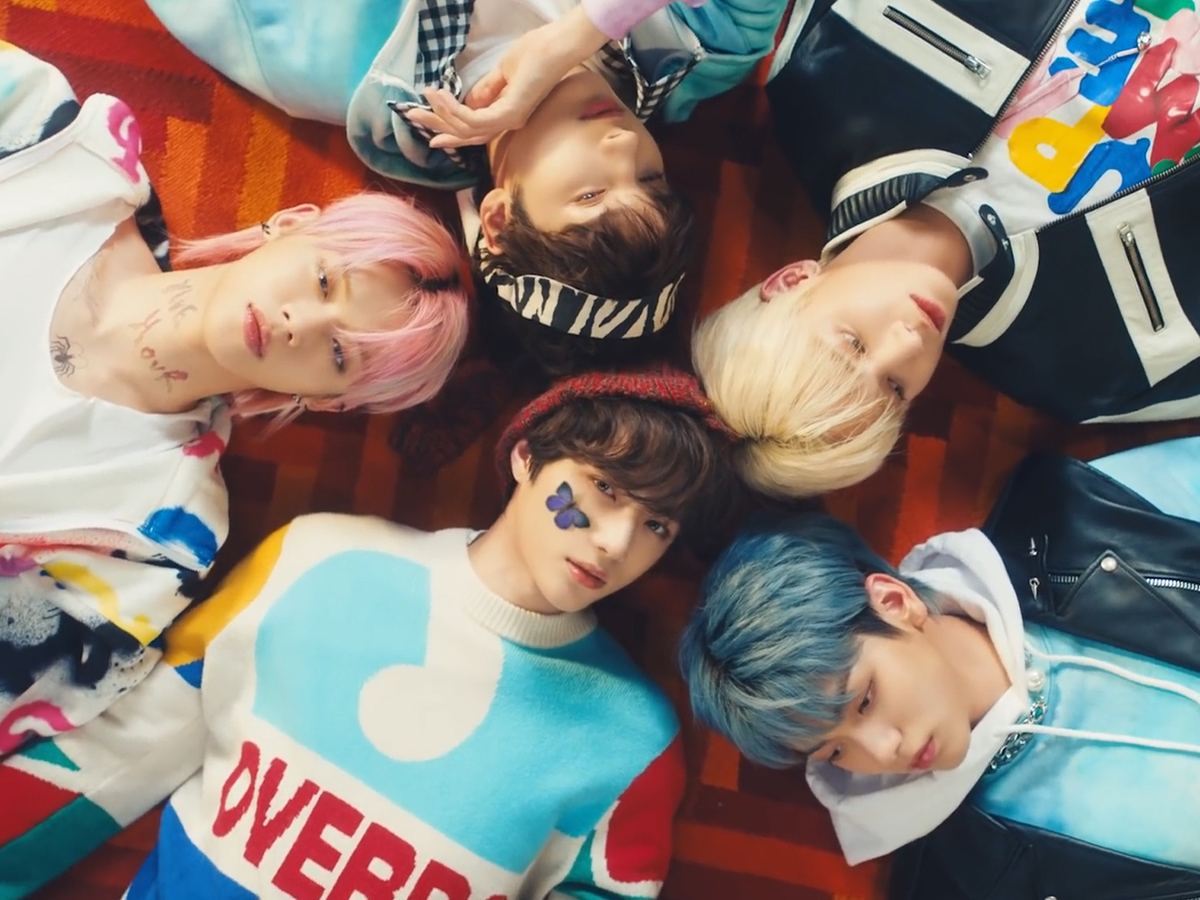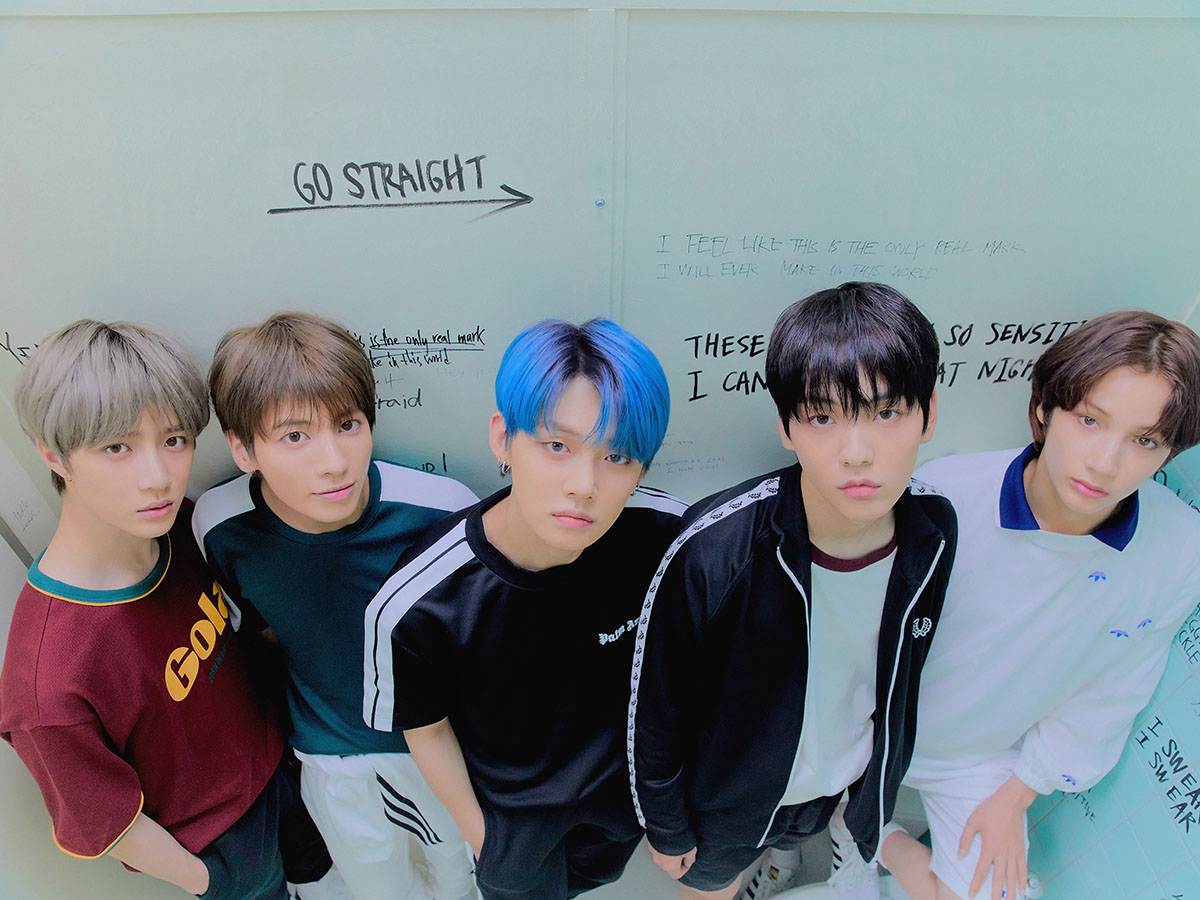
They called him “the 4th Gen It Boy”: On February 17 (KST), TOMORROW X TOGETHER member YEONJUN modeled for ul:kin on the New York Fashion Week runway and was described in local media, foreign press and online as an “it boy,” a relatively unknown term. According to Google Trends, the number of users worldwide searching for “it boy” and “4th gen it boy” that week increased threefold from the week previous. As an extension of “it boy,” searches for the term “4th gen it boy” skyrocketed, while words like “K-pop” and “YEONJUN” were counted together as related “hot” words. Given how unfamiliar the term “it boy” was, searches for the keyword spiked with the growing curiosity around its meaning and origin. “ ‘4th Gen It Boy’ in English. Many of you call me that. And I wanted to thank you for that,” YEONJUN said in a June 19 V LIVE video. “I think you call me that because you think I could become the 4th Gen It Boy.” As seen in the video, the term sprang up among international fans and spread beyond the fanbase as people grew more aware of him.
First used in early 20th-century fashionable society to express someone or something embodying a certain trendy charisma that everyone wants to have or to emulate, the term “it” has since come to be used not only in fashion but also in literature, film and other circles. Starting with actor Clara Bow in the 1920s, then later Edie Sedgwick, Twiggy, Kate Moss and so on—it doesn’t take much to call to mind the defining it girl of each generation. In the roughly 100 years of “it,” however, it’s rare that we ever see an it boy. Since the main consumers in the fashion industry were women, the phrase “it boy” had mainly been used as another term for a promising newcomer or other young man who had captured the hearts of older women. Take, for example, Broadway actor Joshua Colley, model Lucky Blue Smith’s introduction in the media, or the romantic entanglements of a 19-year-old man and a 39-year-old woman in the 2013 French film 20 ans d’écart, released in England and the US under the English title It Boy.
The 4th Gen It Boy title bestowed upon YEONJUN, however, is clearly used in reference to him as a style icon. “As a K-pop idol,” designer and creative director of ul:kin, Lee Seong Dong, said, “YEONJUN was the perfect choice for a vehicle who could narrow the gap between art and the general public, and inform the whole world about K-fashion and even K-culture.” He pointed to “the meeting point between fashion from the artistic field that tends toward the high end, and idols, who are close to the public” as an opportunity to collaborate with YEONJUN. They strategically selected YEONJUN in order to reduce the psychological barrier to high-end fashion and present Korean fashion to the global market as an embodiment of the culture. “If, in the West, unisex clothing is mainly women’s clothing based on men’s, in Asia, and Korea especially, you see a lot of men’s clothes based on women’s,” Lee said. “Male idols wear a lot of clothing with a twist of women’s style. At the same time, even though it’s men’s clothing, there’s a unique trend of women buying it.” He also explained that he “received a lot of similar questions when I visited London and Paris. There was a lot of interest. It’s an exciting prospect in the fashion world, too.” In short, unlike the internationally common phrase “it boy,” 4th Gen It Boy implies both the gender-fluid quality of K-pop where men wear women’s clothes and women buy men’s clothes, and a noteworthy status worldwide. In other words, this new meaning of “it boy” was established abroad to describe the boys of K-pop.
Urban Dictionary, a social dictionary site used chiefly in the US that keeps a record of new words, abbreviations and slang used by teenagers, allows users to register new words and their meanings. The entries that receive the most votes are displayed as “top” definitions. On Urban Dictionary, BTS’s V, Jimin and Jung Kook take turns claiming the top spot for the definition of “it boy” and “Worldwide It Boy.” In addition to an increase in colorful men in areas such as fashion and beauty, it also targets women who want to imitate the “boy” style. People also consider it more important to “have a similar attitude to BTS, where they design and dictate their own style,” than to “wear the same clothes as BTS.” Carolina Malis, a New York-based fashion columnist and content creator, said this is because “BTS don’t choose their clothing for commercial marketability, but to express themselves.” The members “make it abundantly clear what kind of message they want to send through not only the clothes they wear during performances but also at the airport and every day. This kind of 360-degree, all-encompassing style completes the artist’s look.”
The fact that BTS’s style isn’t limited to fashion can easily be seen in derivative content with labels like “BTS-inspired outfits” and “how to dress like BTS.” Revolving around inspiration found from BTS, the videos, which are all over YouTube and TikTok, use the various outfits one member has worn, or the different styles between each member, as their topic. The key lies not in some unified standard but in the diversity of freedom of self-expression dependent on the individual. They use BTS as a reference, but don’t necessarily stick to the specific articles of clothing the members have worn. They’ll feature short hair with tight clothes that emphasize the shape of their body, or else sport loose clothing with hair that comes down to their waist. Women and men alike apply makeup using SUGA’s as a guide and construct a lookbook of everyday apparel from RM and Jin’s outfits. Such diversity can’t be reduced to merely girls who want to dress like girl groups and boys who want to dress like boy bands. “In the past, people branded K-pop performers as being dressed liked women, like they’re gay, or other prejudiced remarks,” Carolina explained. “But now anyone can present themselves however beautifully they want to, using makeup or anything, whether they are a sexual minority or not, including men.” Followers of YouTubers who cover fashion or K-pop, as well as vloggers who document their daily lives or hobbies—fashion, K-pop or otherwise—enjoy dressing like BTS regardless of their gender, age, hairstyle, body type or any other factor. They’re wearing BTS’s lifestyle and messages about life.
Vogue called V “perhaps the most fashion-forward dresser” on the red carpet at the 2017 Billboard Music Awards, where he “paired a cropped pinstripe jacket and polka-dot dress shirt with loose-fit pants—a bold choice that he pulled off with ease.” He was voted number one for the Fashion Face Awards in the Asian male category in 2018 and number three in 2019 and 2020. The Awards are run by I-MAGAZINE, who poll a panel of 350 people in the fashion industry from over 30 countries, including the UK and Hong Kong. Carolina pointed to the “Singularity” comeback trailer as a perfect example: “You can see V’s signature everywhere: in the flashy stage costumes that could just as easily be worn in everyday situations; in the artwork; in the props—every stylistic element reinforces the others throughout the whole video. V’s style combines the chic and the luxurious, and pieces typically said to be feminine or masculine, but it never feels forced or objectionable. Because V understands how everything is a part of style, V has become a style himself.” The Guardian recently singled out Troye Sivan, Justin Bieber and V as the forerunners of the “cherubim haircut,” named after the shaggy hair of baby angels, which has resurged in popularity with men. “Once the brave make it look good, the rest soon follow,” the paper quoted a hairdresser as saying about the long hair style, which covers the forehead with wavy fringe. “For the last 20 years men have sat in my chair and said they want to grow their hair with a subtle lack of dedication in their eyes but now that’s all changed.”
After BTS, global interest in determining the it boy of K-pop carried over to naming YEONJUN the 4th Gen It Boy. Worldwide mentions of “4th gen it boy” were first spotted on Google Trends around the time TOMORROW X TOGETHER gained exposure on YouTube thanks to their performance of “9 and Three Quarters (Run Away)” on a music program in early November 2019. After that, with every new release—from the “Can’t You See Me?” and “Puma” music videos and TV performances, to the “Blue Hour” and “We Lost the Summer” videos—there was a spike in interest. When the concept photos for minisode1: Blue Hour were published, mentions of “4th gen it boy” jumped again, on top of which “YEONJUN” rose to number one on Twitter’s real-time trending topics worldwide. In each of these instances, Internet users across the world seized on YEONJUN’s “it” power. “It didn’t take long for ‘crop top’ to trend worldwide on Twitter,” Teen Vogue reported. “The reason? Oldest member YEONJUN’s white, smiley-face long sleeve, the hem of which ended just above his navel.” The observation was in reference to a minisode1: Blue Hour concept photo TOMORROW X TOGETHER released in November where YEONJUN is wearing a crop top, which has “become something of a rite of passage for all K-pop ‘it’ boys.” Consequently, even in “a patriarchal culture where gender roles are often rigid,” the same articles point out how, “alongside the likes of Lil Nas X … and Harry Styles, K-pop artists are paving the way for a younger, more gender-fluid generation of men around the world.” Citing the message of support for nonbinary people on the back of a T-shirt YEONJUN wore on SBS Medianet’s Fandom Tour as an example, North America-based Korean wave news outlet Koreaboo argues “YEONJUN broke gender norms and wore whatever suited him best.”
When asked in an interview with Allure Korea in March about his favorite styles, YEONJUN replied, “I like everything. To be honest, I like things that (other people might think) are a little over the top.” To him, fashion is “a way to express myself” by “trying on all kinds of clothes without strictly limiting myself to any one thing.” In Vogue Korea, he rhetorically asked, “I mean, who even decided what clothes are for women and what clothes are for men?” At the feet of YEONJUN, such standards set by others are rendered irrelevant. Because it isn’t unusual that he should fail to fall under any particular category, he has no fear of failure when trying something new. He can become a version of himself that can explore self-expression however he wants. Removing all barriers between himself and his style gives him the potential to become whatever he wants to be. Carolina, the fashion columnist, said that “YEONJUN’s fashion isn’t fixated on men and women or some neutral point or genderlessness. He moves only on the what-I-want spectrum, wherever and however he wants. It seems like everything comes natural to him.” In addition to stage wear and airport fashion, YEONJUN shares selfies with fans, capturing everyday moments in the practice room and beyond. Fans can easily scan the outfits he wears in these photos from head to toe to find the brands he’s wearing and get a sense of their harmony when taken together. This way, he shows how he makes “everyday YEONJUN” come together on his own terms, rather than working for the camera. That’s what makes him the it boy of a new generation.
“That’s just how I wanted to dress,” YEONJUN said in a February interview with Vogue Korea. “I just wanted to dress up that day and then I heard there was a video to shoot. There’s some instruments in the song, so I thought a Paris vibe would be a good fit.” He was explaining why was wearing a suit and beret by himself in the dance practice video for “Fairy of Shampoo.” Using his outfit, YEONJUN is able to convey the atmosphere he’s after. And just by watching, his viewers are able to share in some sense of that atmosphere, regardless of where they watch from: They might not be able to actually visit Paris, but they can still become absorbed in that Paris feeling together. In the pandemic era, when classes and meetups with friends have all moved online, sharing with one another over social media like TikTok and YouTube is a new kind of outing. Here, fashion is a reflection of emotion and a desired image, not a reaction to a particular place or season. In TOMORROW X TOGETHER’s “We Lost the Summer” music video, YEONJUN talks to someone on his phone while decked out in a leopard print jacket, sunglasses and a pink scarf. When you’re home, you can wear something comfortable, or you can opt for a colorful jacket and dye your hair; you can wear exercise clothes whether you do the exercises or not, wear winter clothes in summer, or wear summer clothes in the winter. YEONJUN disregards the real world and shows off his unique style in the virtual space of social media. Where fluidity suggested aimlessness or chaos to older generations, it becomes a style for the 4th Gen It Boy. To put it another way, the 2021 version of the it boy represents the fashion, beauty and even way of life shared—and selected—by his generation.
Unauthorized reproduction and distribution prohibited.

- K-kids_these_days.txt2021.03.22
